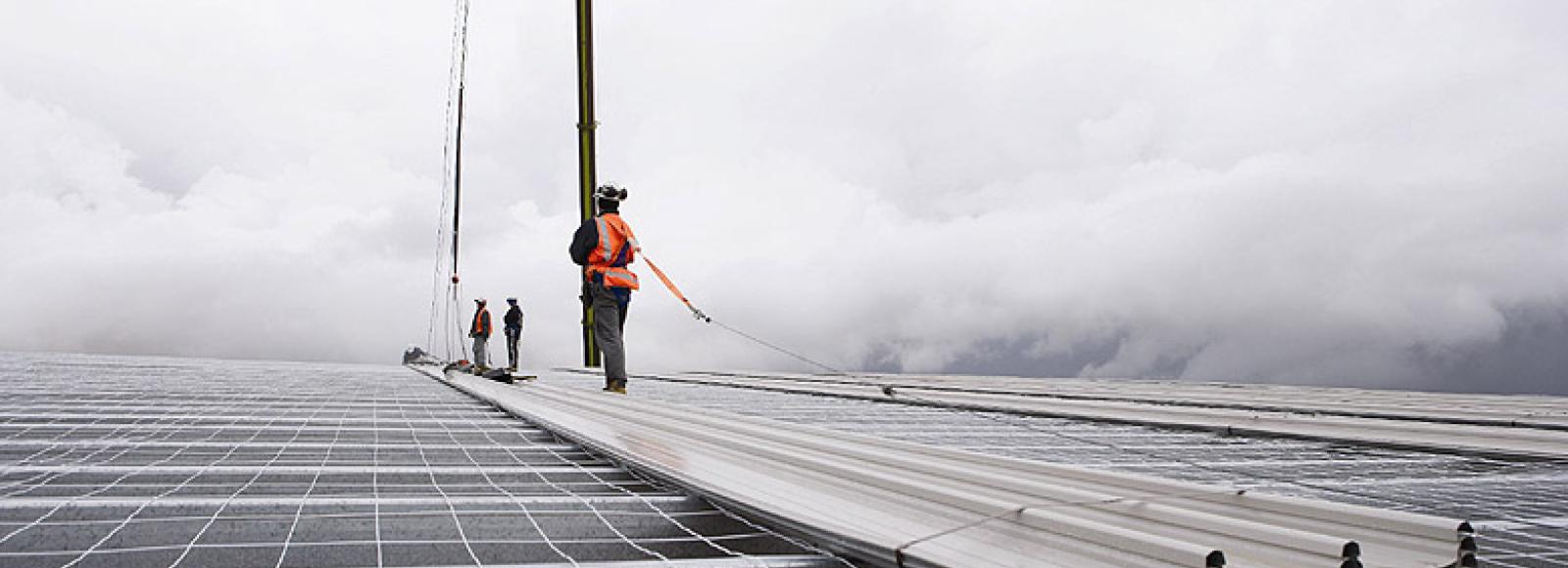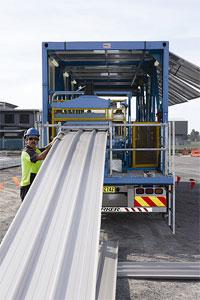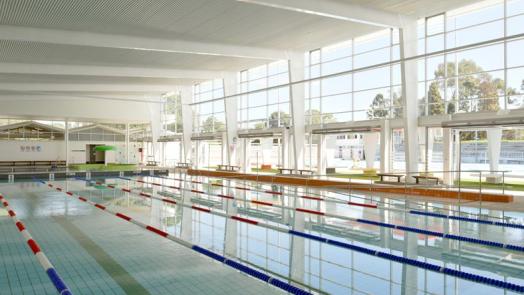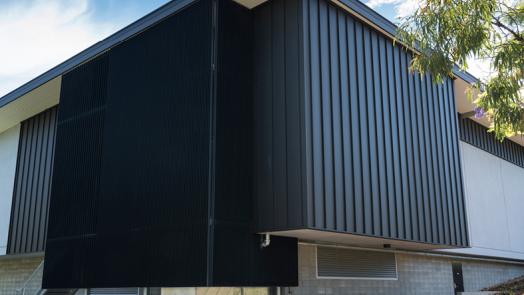
The application of advanced building technologies is helping to speed the creation of a vital maintenance facility for the next generation of Australia's air defence capability. The managing contractors, Hansen Yuncken and contractor Hyland Roofing are working on the multi-million dollar project at Williamtown RAAF base north of Newcastle, New South Wales to complete the centrepiece of ground facilities for Australia's first airborne early warning and control aircraft.
Project Wedgetail will next year equip the RAAF with state-of-the art aircraft each capable of maintaining radar surveillance out to a range in excess of 400 kilometres.
The aircraft will also facilitate improved communications between army, navy, airforce and coastwatch elements spread over huge distances.
While the aircraft will move from base to base as operational requirements dictate, the RAAF has designated its Williamtown base to serve as the home maintenance base for Project Wedgetail.
Construction of two large hangars at Williamtown AEW&C (Airborne Early Warning & Communications) Maintenance Facility has entailed a strong working partnership involving Hansen Yuncken, Hyland Roofing and BlueScope Lysaght.
The massive hangar roofs are taking shape at rapid pace using a combination of onsite rollforming technology and 8,400 square metres of LYSAGHT KLIP-LOK 700 HI-STRENGTH® wide cover, concealed fixed cladding.

"For a project like this, the choice of roof cladding, its delivery to site and its fixing are all crucial elements which were resolved very early in the planning stage," Robert Hyland of contractor Hyland Roofing said.
COLORBOND® Ultra steel in the colour Dune® was specified because of its corrosion resistance in the base's coastal location with regular exposure to windborne salt spray.
LYSAGHT KLIP-LOK 700 HI-STRENGTH® with longitudinal fluting was specified because of its suitability for sprung curved applications.
"I've had experience with alternative products, but the LYSAGHT® profile and its fixing system have proved to be superior on a number of jobs," Robert Hyland said.
BlueScope Lysaght became an on-site partner in the construction process when the hangar dimensions and roof shapes made it obvious that onsite rollforming could bring time, cost, quality and construction efficiency advantages to the project.
"When you have sheet lengths of 45 metres the use of road transport just isn't an option for a job like this," Robert Hyland said.
"This is the first time I've been involved with onsite rollforming, but it has impressed me with what can be achieved."
"As you can imagine, I've been watching closely as the sheets have rolled off the mill, but the standard of the output has been consistently high. From what I've seen already, it's clear that onsite rollforming provides advantages which just increase with the size of the project. Long sheets need less purlins and that lets our installers get the job done quickly, which in turn lets other trades carry out their work below."
At the Williamtown site the BlueScope Lysaght mobile rollformer's output is stacked adjacent to the new hangars and then craned into position.

For more conventional building projects the mobile mill's unique configuration allows it to tilt up to 25 degrees, delivering long length sheets directly to the roof framework.
In fact the mill can be configured to roll out sheets onto the roof frame of buildings with eave heights up to 12 metres.
"Some building projects are ideally suited to longer length cladding," BlueScope Lysaght Design & Construction Pty Ltd Project Manager, Bill Reeve, said.
"Our mobile rollforming technology maximises the cost and efficiency advantages that come with milling sheets on site, because often a single sheet can be used to cover the entire length of a roof."
"This eliminates transportation challenges, step joints, minimises the possibility of leaks and gives long clean lines while reducing the number of purlins required to support the cladding. The speed of installation is greatly increased and that has obvious attractions for roofing contractors."
Mr Reeve pointed out that the significant advantages of mobile rollforming are maximised when it is employed to produce long lengths of high performance cladding which are then installed using a concealed fixing system.
"The rule of thumb with steel cladding is that you need to allow for 3mm expansion over the length of a five metre sheet," he said.
"When conventional sheet piercing fixing techniques are used with long length cladding that necessitates time intensive use of extra washers and varying the diameter of the fixing holes. Expansion joints may also be required."
LYSAGHT KLIP-LOK 700 HI-STRENGTH® wide cover, concealed fixed cladding overcomes those problems with fixing clips which allow long sheets to expand and contract without compromising the roof's watertightness. The clip design provides a secure fixing to the purlin beneath, but still allows longitudinal movement to cope with thermal stresses.
Installation speed is also optimised because of the lack of need for elaborate flashing and because roof fixers do not have to turn sheets up and down at expansion joints.
The benefits of specifying LYSAGHT KLIP-LOK 700 HI-STRENGTH® wide cover, concealed-fixed cladding and rollforming the sheets on site will continue throughout the life of the new RAAF Maintenance Facility hangars. Maintenance to keep expansion joints clean is eliminated and the absence of roof sheet piercings helps prevent water penetration.
Construction of the two maintenance hangars at RAAF Williamtown is scheduled to be completed by September.
COLORBOND® Ultra steel cladding in the colour Surfmist® will also feature on soffits of the buildings, rollformed in LYSAGHT PANELRIB® profile while 7,400 square metres of the same material rollformed in LYSAGHT SPANDEK® profile will clad the walls to provide protection against the elements for their high tech contents.


